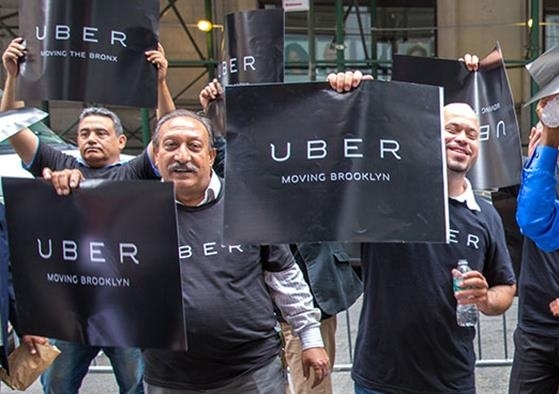The gig economy: Are workers on demand the future face of employment?
Peer-to-peer, the collaborative economy, the on-demand economy. Tuly innovative? Or is this new way of working just another avenue for businesses to pay contractors low wages?
Peer-to-peer, the collaborative economy, the on-demand economy. Tuly innovative? Or is this new way of working just another avenue for businesses to pay contractors low wages?

Peer-to-peer, the gig economy, the collaborative economy, the on-demand economy. For a "new" way of working, there are already a lot of terms that have sprung up to define it.
But how does peer-to-peer differ from traditional employment, how rapidly is it developing and what are the implications for the future of work?
In the gig economy, high-tech companies act as brokers between contractors and customers using online platforms to facilitate a pure, market exchange.
Independent contractors use their skills or assets, such as a car or spare room, to derive income by completing tasks or "gigs" during a defined period.
An indication of the rapid growth and power of these online platforms is evident in companies such as Airbnb or Uber Technologies. Accommodation hosting site, Airbnb, is now the second most valuable hospitality brand in the world after Hilton. In Australia there are about 90,000 hosts registered, making an average of around $7500 a year.
Uber, the transportation network app that has revolutionised the taxi industry, launched in 2009 as another small start-up in Silicon Valley, California. Recently it's been valued at US$50 billion.
But there are plenty of other start-ups populating the gigosphere. Cleaning services Handy and Homejoy, online work platform Crowdflower, parking-space finder Divvy, are all based on the same "community" model that is disrupting traditional marketplaces by bringing suppliers and customers together.
It suggests there is a large untapped demand out there not just among consumers but also suppliers. Software company Intuit estimates that by 2020, freelancers and independent contractors will make up 40% of the US labour force with on-demand employees a fast growing sub-category.
In Australia, the Grattan Institute reports that 8% of people would like to work more hours and cite a lack of flexibility as the thing that's stopping them.
The business model of these platforms is based on having a very flexible labour force that obviates the need for traditional employer-employee relationships and all the associated costs. It's a model that incites considerable unease, says Nick Wailes, a professor and associate dean (digital and innovation) at UNSW Business School.
"It polarises people," says Wailes. "Is this creating communities of entrepreneurs who have been marginalised from the traditional economy, such as housewives, students, retirees and immigrants, offering them the flexibility of part-time working?
"Or, is it an underhand way for businesses to get around labour laws and pay these contractors low wages?"
In the US, the gig economy is on the radar in the presidential campaign. Hillary Clinton, in her first major speech on the economy, promised to crack down on "bosses misclassifying workers as contractors".
Since that speech, the California Labor Commissioner took a decision that has shaken the entire on-demand economy, ruling that an Uber driver in dispute with the company was an employee and not a contractor and that Uber was liable for his expenses. Uber, unsurprisingly, is appealing the decision.
Clinton, like many others, acknowledges that the gig economy is creating exciting opportunities and unleashing innovation but she cautions, "it's also raising hard questions about workplace protection and what a good job will look like in the future".
Read the full article on BusinessThink.